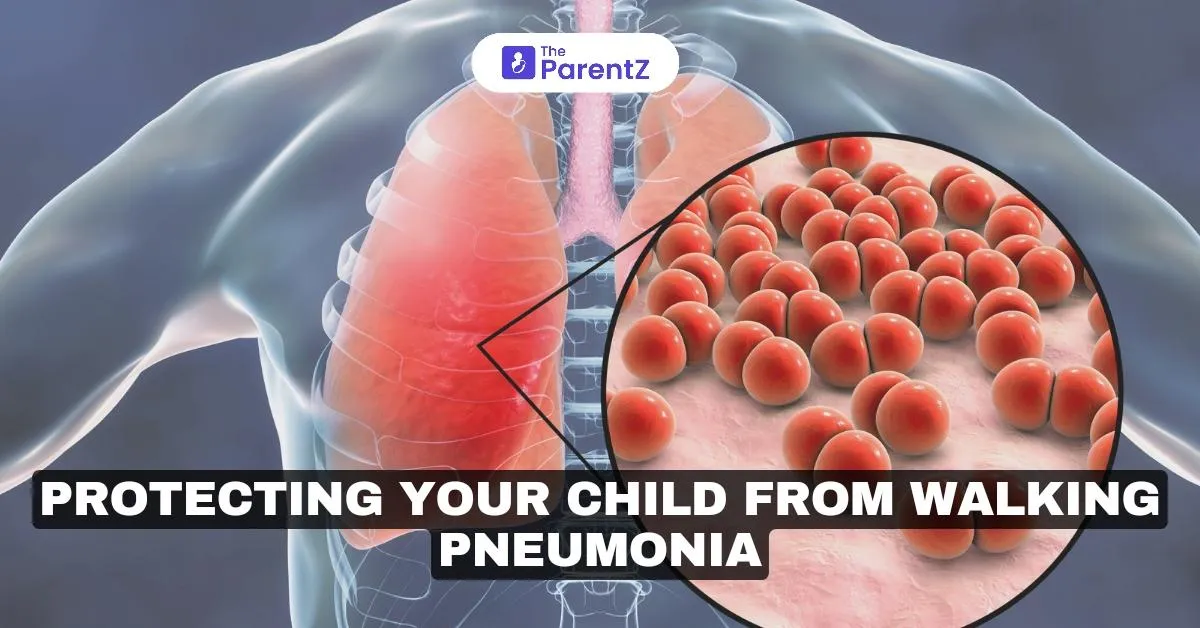When your child is suffering from cough, it's easy for parents to consider it a seasonal cold. What if its something more serious? Walking pneumonia, considered mild pneumonia, is one of such illnesses that is common for most parents to catch off guard. It is typically caused by the bacteria Mycoplasma pneumoniae. It is a respiratory infection that significantly hampers a child’s health without any obvious symptoms of pneumonia. Read below this article to find out how you can protect your child from walking pneumonia and what to do if your child catches it.
What Is Walking Pneumonia?
Walking pneumonia is typically a less severe form of pneumonia and affects the lower and upper respiratory tracts. It is considered ‘walking’ because most kids and adults can continue with their daily routine while dealing with it. This infection particularly peaks in late summer and early fall. Besides, according to the study, almost 30 percent of cases of pneumonia are caused by Mycoplasma pneumoniae. Furthermore, it can easily spread through respiratory droplets via sneezing or coughing.
Some of the common symptoms of wheezing pneumonia may include
- Low fever
- Persistent dry cough
- Fatigue and weakness
- Sore throat
- Headache
- Discomfort in chest
Tips to Protect Your Child From Walking Pneumonia
While it's relatively impossible to protect your little one from every germ, with some helpful prevention strategies, you can significantly reduce the risk of walking pneumonia in kids.
Handwashing is a must.
Handwashing isn't an overhyped habit but an essential and powerful one. In fact, according to several studies, proper handwashing can reduce the spread of respiratory infections by 21 percent. Therefore, it is important for your little one to wash their hands properly with soap, especially before meals or after coughing or sneezing.
Immune Dose
A strong immune system can actually play a big role in warding off infections. Therefore, one of the key approaches is to ensure your kid’s diet includes an adequate amount of fruits, vegetables, and proteins. Additionally, fruits and vegetables rich in vitamins can actually support the defense mechanism of the body.
Keep Vaccinations Updated
Though there’s no certain vaccine for walking pneumonia, general vaccinations such as flu shots can significantly reduce the risk of complications. This is because the flu actually weakens the immune system, thus making kids more vulnerable to catching serious infections.
Good Cough Etiquette
One of the most essential aspects of preventing communicable diseases is to teach good hygiene habits. When it comes to preventing walking pneumonia, good coughing etiquette can prevent germs from spreading to others.
Avoid Overcrowded Spaces
Last but not least, prevention is better than cure. So if you hear about widespread cases of walking pneumonia in your locality, consider limiting your child’s exposure to overcrowded areas where germs may replicate.
Takeaway
Most cases of walking pneumonia are easily treated at home with plenty of rest, hydration, and antibiotics based on a doctor's prescription. However, if you suspect some serious symptoms, such as difficulty breathing, high fever, blue lips or nails, and severe pain in the chest, we recommend consulting your pediatrician for a proper diagnosis of the condition.








Be the first one to comment on this story.